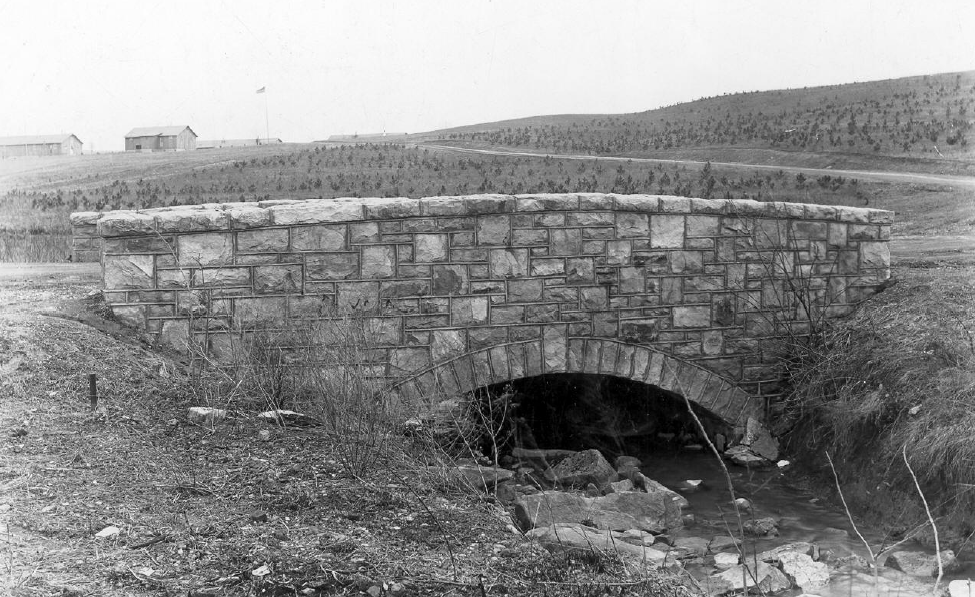CCC Living at Fort Necessity
In the spring of 1935, the first CCC camp set up at Fort Necessity consisted of about seventy men from the Uniontown area. The camp lasted for 2 ½ years and eventually turned 850 boys into men. Of this number, 250 boys were from the south. The first group of enrollees was issued surplus Army tents for their camp. They remained quartered in these tents until wooden barracks were built before winter. The tents could hold up to 32 cots.
When completed, the permanent camp was ‘U’-shaped with a flag in the center. It consisted of seven barracks, a mess hall, Army officers’ quarters, civilian supervisors’ quarters, food storage building, a pump house, a blacksmith shop and a garage. Recreation and education were a priority. Both played a very important part in the life of an enrollee.
A library was started. Dances were scheduled and a newspaper was published. Education was voluntary but was offered to all whom were interested. The discipline learned here helped to prepare the men for military life in WWII. They also learned a trade in which they could use the rest of their lives.


